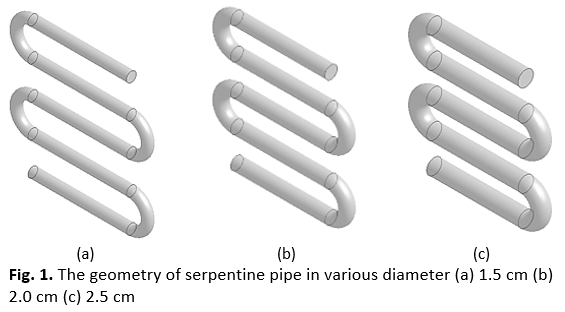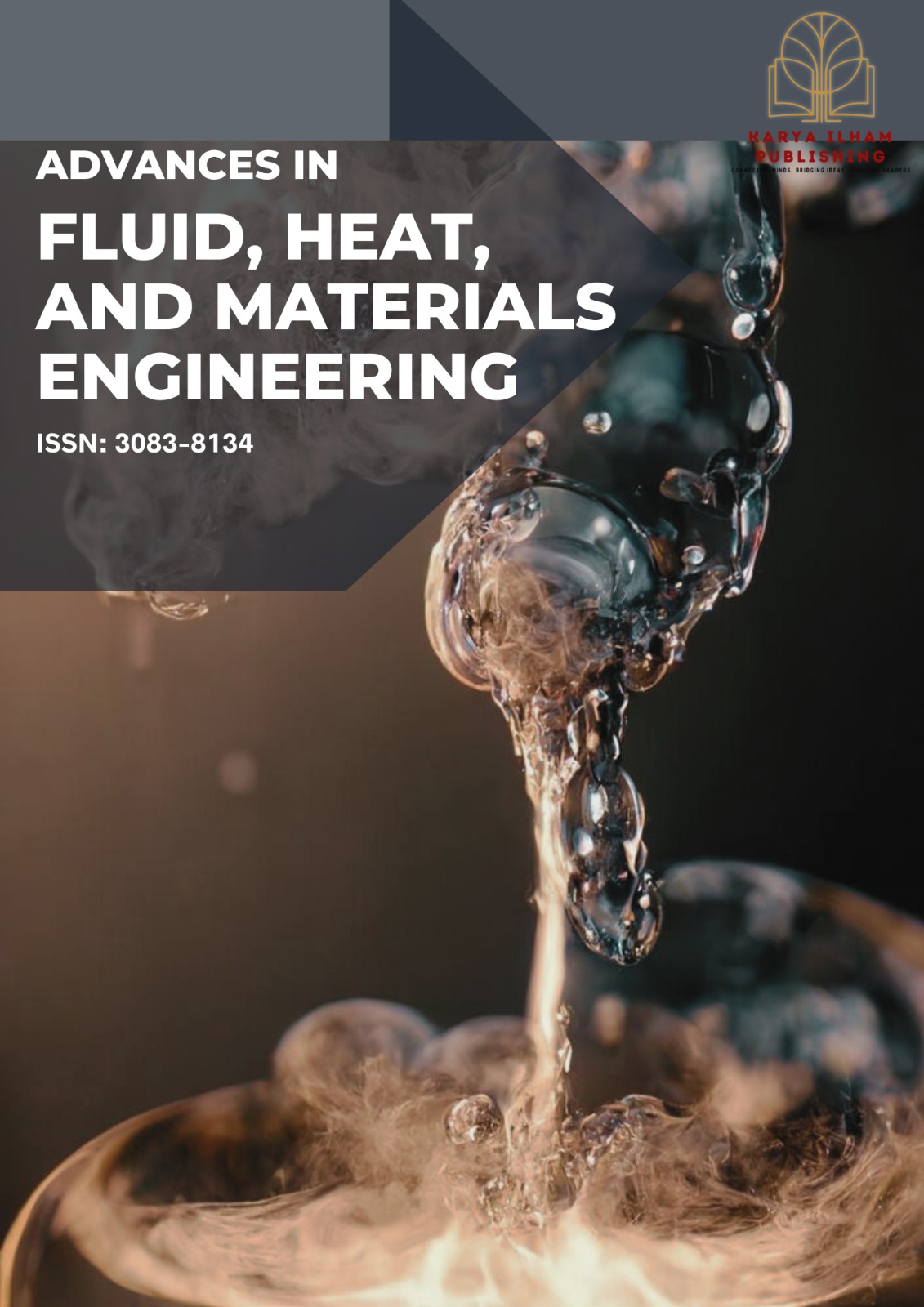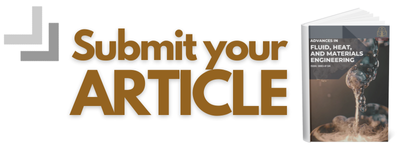Numerical Prediction of Flow Characteristics in the Various Diameters of Serpentine Pipe
DOI:
https://doi.org/10.37934/afhme.6.1.3949aKeywords:
Serpentine pipe flow, computational flow dynamic, flow separation, secondary flow, pressure distribution, velocity profiles, turbulence intensityAbstract
The study on water flow inside serpentine pipes was conducted using Computational Fluid Dynamics (CFD) simulations with ANSYS Fluent software. The serpentine pipes, characterized by multiple bends and curves, influence fluid motion and pressure loss, which are critical for applications in cooling, heating, and fluid transport systems. The investigation focused on how varying pipe diameters of 1.5 cm, 2.0 cm, and 2.5 cm affect turbulent water flow while maintaining the same pipe geometry. The pipe design included repeated 180-degree bends connected by straight sections to capture curvature effects such as swirling flows known as Dean vortices. The RNG k-ε turbulence model was employed to accurately simulate these complex flow patterns. Mesh quality and grid independence tests were performed to ensure the reliability of the results. Findings revealed that smaller pipe diameters induced stronger swirling flows, and higher pressure drops due to tighter bends, whereas larger diameters resulted in smoother flow and reduced pressure loss. The turbulence model used was effective in capturing these flow behaviour’s, validating its appropriateness for this type of analysis. In conclusion, pipe diameter was found to significantly influence flow patterns and pressure losses in serpentine pipes. CFD proved to be a valuable tool for predicting these effects, aiding engineers in designing more efficient piping systems by optimizing pipe size and shape to balance flow uniformity and energy loss. These insights are practical for enhancing thermal and fluid transport applications involving serpentine pipes.













